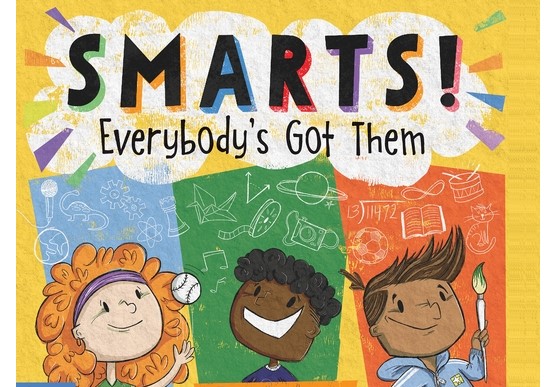Thinking that You’re Stupid is Not a Smart Thing to Do
Posted by Thomas Armstrong Ph.D. Executive Director of the American Institute for Learning and Human Development on Feb 10th 2021

Being a little kid is not easy, especially these days. But being a kid with a disability is even harder. Bullies abound, and taunts of ‘’you’re stupid!’’ ‘’dumbo!’’ and ‘’retard’’ stain the self-concept of the child with special needs. I remember teaching Ray, a first grader with suspected Asperger’s syndrome in my special education classroom, and how, after teaching my special ed students about ‘’put-downs’’ and ‘’lift-ups’’ (my term), Ray would come up to me and say, ‘’he put me down . . . he put me down . . .’’ over and over again, as if he had mastered the concept but felt powerless to do anything about it when it came down to specific encounters. Fortunately, there are many fine professionals working hard to implement anti-bullying policies in schools around the country. But while it’s extremely important to stop bullying behaviors, it’s equally important to help shore up the self-esteem of our kids with special needs, since their diagnosis opens them up to more than their share of insults and jeers.
One of the ways we can do this is by taking on the concept of intelligence. Our culture places a lot of value on being intelligent, and to be perceived as lacking in this quality is to be at a disadvantage socially. Thus, the words ‘’stupid,’’ ‘’dumb,’’ ‘’moron,’’ ‘’idiot,’’ and related terms carry with them the potential to seriously wound the self-image of students with special needs (the words ‘’moron’’ and ‘’idiot’’ were actually diagnostic terms used by special educators in the early part of the 20th century). In their place, we need to fortify the idea of, not intelligence, but intelligences, so that every child, with or without special needs, has the message that they are smart, and not just in one way but in several ways. The work of Harvard psychologist Howard Gardner has been instrumental in providing a solid theoretical background for this idea of multiple intelligences. Gardner suggests that there are eight basic intelligences: word smart, number/logic smart, picture smart, body smart, music smart, people smart, self smart, and nature smart. He emphasizes that every person has all eight intelligences, but each in their own way.
This is the sort of cognitive model that is tailor-made for kids with special needs. We’re now in a time of fascinating research which is opening up a broader understanding of the strengths, talents, and abilities of kids and adults with ‘’neurodiversities’’ (my preferred term). Individuals diagnosed with autism have been seen to have perceptual strengths, systemizing abilities, special interests, and within the context of Gardner’s model number/logic smart and picture smart. Those identified as dyslexic have been seen as possessing entrepreneurial skills (people smart/self smart), and global visual spatial skills (picture smart). Those diagnosed with ADHD are seen to be highly creative, to prefer novelty, and to have high needs for stimulation, especially using their bodies (body smart). Many individuals identified with Williams syndrome, a form of intellectual disabilities, are seen as having special abilities with music smart, people smart (they can be very friendly), and word smart (they have unique vocabularies), such that an article in the Scientific American suggested that they might have been the ‘’little people’’ from fairy tale lore who wandered through the English countryside singing songs and passing along folk tales.
We need to let all kids know, but especially kids with special needs, that they’re smart. I mean, really! That’s why I just wrote a picture book for kids from ages five to nine (illustrated by Tim Palin), that introduces them to the idea of multiple intelligences: Smarts! Everybody’s Got Them. This book helps kids understand that there are many ways to be smart, and that even though they make mistakes, that doesn’t mean they’re dumb, because they can learn a lot from their failures. It suggests that by working to develop their many intelligences, they can get even smarter than they are now.
Typically, our schools and our culture in general, place only two of the intelligences within the boundaries of ‘being smart’’ – word smart and number/logic smart. I call these ‘’school smarts.’’ Gardner’s theory of multiple intelligences says we also need to regard as intelligent behavior the child who knows everything there is to know about how machines work, or the kid who can paint well, or play the piano expressively, or has a facility with playing chess, or does gymnastics gracefully, or has a special affinity with animals. By widening the circle of what is regarded as ‘’being smart’’ to include all eight intelligences, we’re reinforcing the special gifts of kids with special needs, and providing them with the inner fortitude to withstand the assaults of those who have the egregiously mistaken belief that special needs equals stupidity. I love the quotation from the film The Imitation Game, about the computer pioneer Alan Turing, who was on the autistic spectrum: ‘’Sometimes it is the people no one imagines anything of who do the things that no one can imagine.’’ Let’s have discussions with our kids about how they are smart, and how the world is looking for people who have exactly their specific and unique kind of intelligence.
Thomas Armstrong has been an educator for forty-six years and is the author of 19 books including Smarts! Everybody’s Got Them, and If Einstein Ran the Schools: Revitalizing U.S. Education. Visit his website at: www.institute4learning.com. Follow him on Twitter: @Dr_Armstrong.








